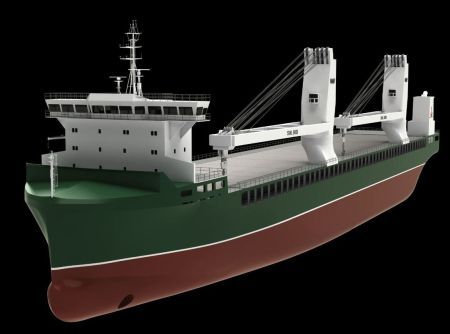
With funding from the Federal Ministry of Economics and Technology and supported by “Projektträger Jülich” (PTJ), over the next three years Hamburg University of Technology, Mareval AG Hamburg and the maritime engineering company HeavyLift@Sea will conduct research into the improvement of tools for the simulation of offshore crane operations.
The project is named HoOK – Hochseeoperationen mit Kranen [Offshore Operations with Cranes]. The goal is the early integration of the necessary tools into the design and planning process of ships – an essential requirement to promote innovations and international competitiveness in German specialist shipbuilding.
“We want to develop a simulation tool which enables the optimization of the whole system of ships with cranes even at an early planning stage,” says Hendrik Gröne, Managing Director of HeavyLift@Sea, about the objective. “Until now the simulation of crane operations on a moving ship has hardly been discussed in ship building technology studies and has not been considered in design. The existing processes for investigating the combination of cranes and ships under loads and at sea are inaccurate or not suitable for practical application. So an advance in this area is now urgently needed for the offshore sector, which is crucial for the future of German shipbuilding. This would result in significant optimisation, for example in the transport and installation process for offshore wind farms.”
HeavyLift@Sea, with its headquarters in the HafenCity quarter in Hamburg, is a maritime engineering company with a particular focus in the heavy cargo shipping sector and offers its customers services including simulations of the optimum balance and the movement of the ship, crane and cargo in a variety of applications. The ten-strong team under founders Lars Rolner and Hendrik Gröne takes on projects from the design of individual hoists to the development of entire, complex special vessels.
Hendrik Gröne continues: “Taking a holistic view of the whole system of a ship is our speciality. As a young company we are especially pleased to have the extraordinary opportunity to be one of the partners in this important project, which will create advances in the design of innovative, internationally competitive crane ships.”
In the research project, scheduled for three years, HeavyLift@Sea will contribute its experience of practical challenges. The company has software tools for creating ship designs, and answering questions relating to ship design and the operation of ships.
Mareval AG is the coordinator of the research and development project, taking on the tasks of modelling the crane and the loads arising from the environmental conditions. “Even though crane operations are highly significant in offshore technology, there is a shortage of simulations and calculation tools with which they can be analysed in the early design phase of a crane ship, or in the early planning phase of an offshore deployment. These kinds of tools are needed in particular in order to be able to identify and enhance potential cost reductions in the installation of offshore wind farms,” says Dr.Eng. Hendrik Vorhölter from Mareval AG. “After completion of the project at the beginning of 2016, Mareval AG will be even better able to support its customers in planning offshore deployments and choosing and developing suitable equipment.”
“We believe that the transition to energy from offshore wind farms can only succeed if more shipbuilding expertise is incorporated,” says Prof. Stefan Krüger from the Hamburg University of Technology (TUHH). “Heavy cargo ships, like those developed by HeavyLift@Sea and Mareval, are also suitable in principle for carrying out construction work for offshore wind farms, if it is possible to calculate with some reliability the transfer of heavy loads in wind and waves. We shipbuilders are confident that we can contribute to the project and in doing so increase the competitiveness of the industry partners, and also gain important basic knowledge for research and training at TUHH. This is exactly what makes the project so attractive.”
The joint project is funded by the Federal Ministry of Economics and Technology from the funding programme for Next-Generation Maritime Technologies.
We use cookies to improve your experience. By continuing to use our site, you accept our Cookies, Privacy Policy,Terms and Conditions. Close X